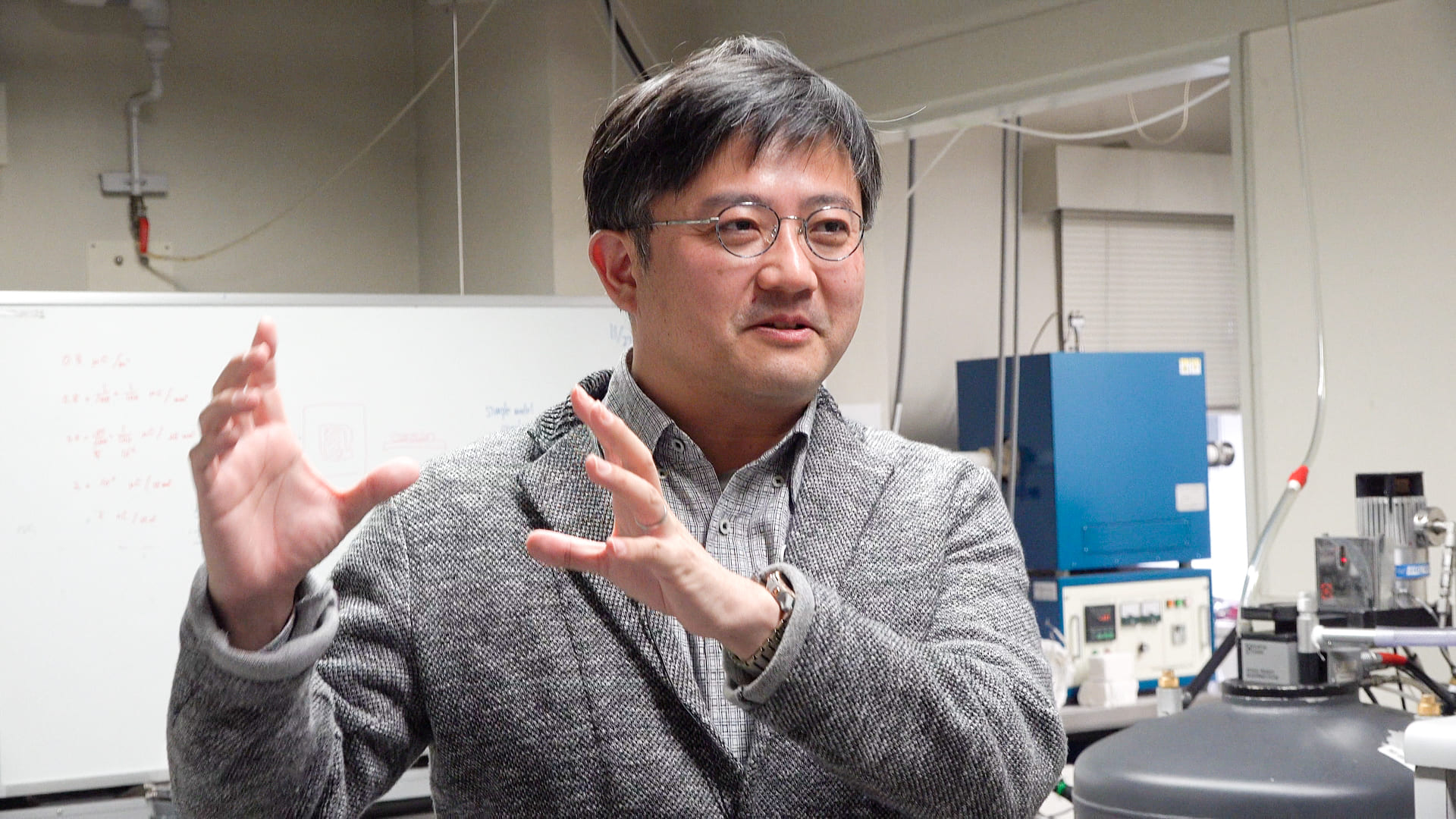INTRODUCTION OF LABORATORY
Here we will introduce two examples of our recent study, break down of quasiparticle in antiferromagnet and nematic correlation in frustrated magnet. Many phenomena in condensed matter science can be explained by using the concept of quasiparticle. For example antiferromagnetic order is a result of Bose condensation of magnons and superfluidity is those of phonons. The quasiparticle, however, can be unstable and decay if allowed by conservation laws. It was initially predicted in superfluid Helium and was identified by a termination of the excitation at twice the energy of a roton. Recently the magnon version of the spectral termination was predicted in the 2D square lattice Heisenberg antiferromagnets (SLHAF) in high magnetic field. At zero field a two-magnon continuum spreads in the higher energy region for all wave vector q and there is no decay channel. With increasing field the one-magnon branch moves to higher energy around q = (π π) and eventually overlaps with the continuum at a threshold field. The hybridization of one-magnon with two-magnon continuum induces instability of the one-magnon. Our group experimentally observed the magnon instability in S=5/2 SLHAF Ba2MnGe2O7 by using neutron scattering technique. One of the recent interests in condensed matter science is to search for a spin liquid that exhibits order not in a conventional two-spin correlation but in other correlations such as magnetic multipole or spin chirality. A 1D frustrated spin chain with a ferromagnetic nearest-neighbor interaction ( J1) and an antiferromagnetic next-nearest-neighbor interaction ( J2) is diversity of such novel states. In zero field vector spin chirality does order with a broken Z2 symmetry. At a field close to the ferromagnetic polarized phase, a pair of magnons form a bound state, and its Bose condensation at approximately q = π induces the quasi-long-range order of transverse spin nematic correlation 〈S+0 S+1 S?l S?l+1〉. At the same time longitudinal two spin correlation exhibits spin density wave like sinusoidal behavior. Our group explored such novel states in ferromagnetic frustrated chain LiCuVO4 and identified the SDW-like order in high magnetic field.
図:(A)-(C) さまざまな圧力下で測定されたCsFeCl3の中性子スペクトル。大気圧下(A)と0.3ギガパスカル(B)では1本のスペクトルが観測されたが、量子臨界点近傍の1.4ギガパスカル(C)では複数の特徴的なスペクトルが観測された。
S. Hayashida et al., Sci. Adv. 5, eaaw5639 (2019).
(D),(E)中性子スペクトルの計算結果。位相モードと振幅モードの混成を考慮した計算(D)は実験(C)を再現するが、考慮しない計算(E)は実験(C)を再現しない。
S. Hayashida et al., Sci. Adv. 5, eaaw5639 (2019).
















